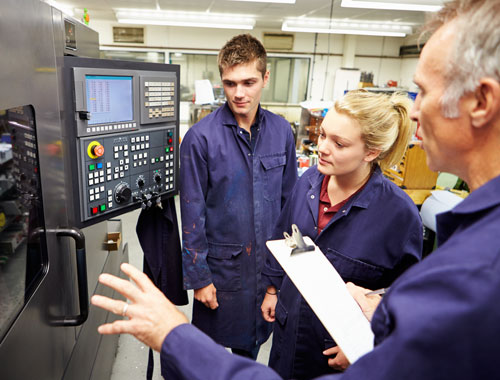The face of manufacturing is rapidly changing. Advances in technology and automation are increasing productivity and increasing the demand for highly skilled workers. Businesses are experiencing shortages of machinists, operators, and technicians as well as industrial engineers and manufacturing engineers. Today, careers in manufacturing offer higher hourly wage and benefit compensations than other non-manufacturing industries. With the median age of the manufacturing workforce at 44.7 years there is a need for young, skilled workers to enter the manufacturing field.
YOU WILL:
- Be paid well for your skills
- Learn new technologies
- Produce a tangible product
- Work in a clean, modern environment
- Have a career path
- Help your country compete in the world economy
- Find a variety of jobs that stimulate your interests
 The high skill and continuous training required for these jobs means that manufacturing employment will be more stable than in the past. The U.S. manufacturing workforce employs 12 million people and supports the jobs of another 17.2 million. U.S. manufacturers are the most productive in the world and if classified as its own country, the U.S. manufacturing economy would rank as the tenth largest economy in the world.
The high skill and continuous training required for these jobs means that manufacturing employment will be more stable than in the past. The U.S. manufacturing workforce employs 12 million people and supports the jobs of another 17.2 million. U.S. manufacturers are the most productive in the world and if classified as its own country, the U.S. manufacturing economy would rank as the tenth largest economy in the world.
Manufacturing drives U.S. innovation. It transforms concepts and ideas into new products and processes that not only generate profit, but make the world a better place. It creates new and vital industries, including biotechnology and solar power. As engineers and manufacturers develop new technologies, they build the capabilities to advance and innovate in new fields.

